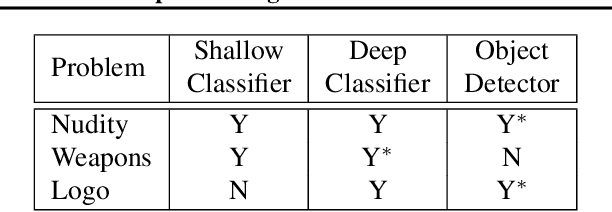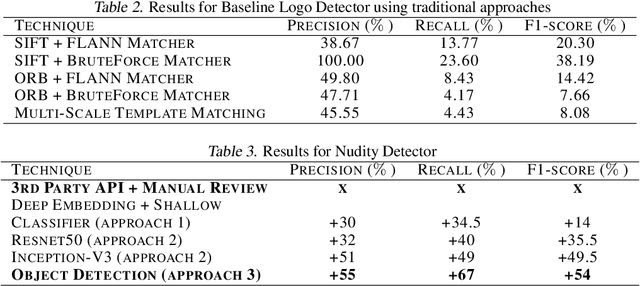Theban Stanley
SIR: Similar Image Retrieval for Product Search in E-Commerce
Sep 29, 2020



Abstract:We present a similar image retrieval (SIR) platform that is used to quickly discover visually similar products in a catalog of millions. Given the size, diversity, and dynamism of our catalog, product search poses many challenges. It can be addressed by building supervised models to tagging product images with labels representing themes and later retrieving them by labels. This approach suffices for common and perennial themes like "white shirt" or "lifestyle image of TV". It does not work for new themes such as "e-cigarettes", hard-to-define ones such as "image with a promotional badge", or the ones with short relevance span such as "Halloween costumes". SIR is ideal for such cases because it allows us to search by an example, not a pre-defined theme. We describe the steps - embedding computation, encoding, and indexing - that power the approximate nearest neighbor search back-end. We also highlight two applications of SIR. The first one is related to the detection of products with various types of potentially objectionable themes. This application is run with a sense of urgency, hence the typical time frame to train and bootstrap a model is not permitted. Also, these themes are often short-lived based on current trends, hence spending resources to build a lasting model is not justified. The second application is a variant item detection system where SIR helps discover visual variants that are hard to find through text search. We analyze the performance of SIR in the context of these applications.
Image Matters: Detecting Offensive and Non-Compliant Content / Logo in Product Images
May 06, 2019



Abstract:In e-commerce, product content, especially product images have a significant influence on a customer's journey from product discovery to evaluation and finally, purchase decision. Since many e-commerce retailers sell items from other third-party marketplace sellers besides their own, the content published by both internal and external content creators needs to be monitored and enriched, wherever possible. Despite guidelines and warnings, product listings that contain offensive and non-compliant images continue to enter catalogs. Offensive and non-compliant content can include a wide range of objects, logos, and banners conveying violent, sexually explicit, racist, or promotional messages. Such images can severely damage the customer experience, lead to legal issues, and erode the company brand. In this paper, we present a machine learning driven offensive and non-compliant image detection system for extremely large e-commerce catalogs. This system proactively detects and removes such content before they are published to the customer-facing website. This paper delves into the unique challenges of applying machine learning to real-world data from retail domain with hundreds of millions of product images. We demonstrate how we resolve the issue of non-compliant content that appears across tens of thousands of product categories. We also describe how we deal with the sheer variety in which each single non-compliant scenario appears. This paper showcases a number of practical yet unique approaches such as representative training data creation that are critical to solve an extremely rarely occurring problem. In summary, our system combines state-of-the-art image classification and object detection techniques, and fine tunes them with internal data to develop a solution customized for a massive, diverse, and constantly evolving product catalog.
 Add to Chrome
Add to Chrome Add to Firefox
Add to Firefox Add to Edge
Add to Edge